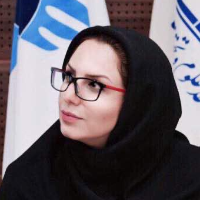Analyzing the Role of Urban Approaches in Response to Climate Changes with Emphasis on Biophilic Urbanism, A Case Study: Tonekabon City
In current century, climate change has become one of the most important global challenges which is mostly due to the human activities and also the lack of paying attention to its environmental results. The negative consequences of climate change at different levels –from local to international- have caused various implementations in response to these changes in forms of climatic reduction and climatic adoption in recent years. In this regard, some urban approaches have responded to these challenges by using their principles that biophilic urbanism is one of them. Biophilic city can improve the quality of environment and also affects on responsing to the challenges of climate change by using the natural features.
This research investigates the nature of climate changes and review the campact city, blue urbanism, carbon-nutral city, renewable city and biophilic urbanism approaches and measure the biophilic capabilities of Tonekabon city (as a case study) in response to climate changes.
This research has descriptive and analytical methods based on documental studies, observation and also survey. Meta- SWOT technique is also used for analysis.
Among eleven biophilic capabilities which response to the climate changes, two capabilities of “green space and urban forests conservation” and “urban greening programmes” have the most effects on responsing to climatic changes particularly flood event in Tonekabon city. Also prioritizing the urban environmental development in urban development plans in coastal areas such az Tonekabon can provide the necessary backgrounds in order to overcome climatic challenges.
Utilizing the capabilities of biophilic city approach could be effective on overcoming climate changes in coastal cities of north of Iran such az Tonekabon. The biophilic capabilities of these cities in particular urban forests and green spaces have a significant role in reduction of warming and flood.
-
Designing the model of drivers for the development of creative tourism in historical contexts with the approach of start-up businesses (case study: Rasht city)
Roya Eghbal Moghaddam, *, Hossein Zabihi
Journal of tourism and development, -
Conceptualization of vitality on the scale of urban space; Development of a dynamic conceptual model
Emad Shamsollah, Hamid Majedi *,
,


